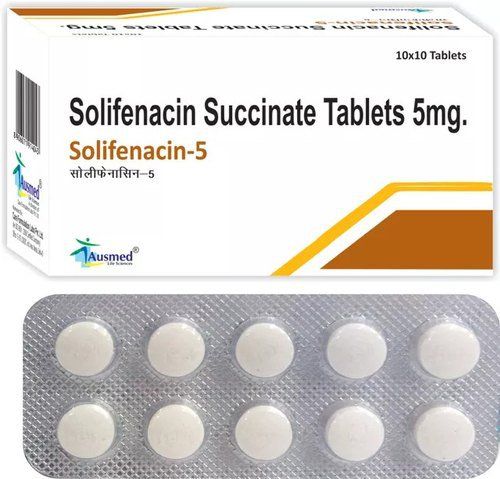This is an automatically translated article.
Posted by Doctor Ta Quoc Ban - Department of Obstetrics and Gynecology, Vinmec Phu Quoc International General HospitalPostpartum is the health and mental problems that a woman may experience shortly after giving birth, the postpartum period is counted as 42 days (6 weeks) after giving birth.
1. Common types of postpartum infections
Common postpartum problems include:
Hair loss Hemorrhoids and constipation Postpartum depression Postpartum hemorrhage Postpartum hemorrhage, urinary incontinence, Milk duct obstruction, Perineal pain (area lying down). between vagina and rectum) Postpartum infection
2. How to treat common postpartum infections
2.1. Postpartum haemorrhage It is normal to have some bleeding soon after giving birth. In fact, it is estimated that only about 2% of all births will have bleeding. The cause of this phenomenon is usually due to prolonged labor, multiple births or an infection of the uterus.
Postpartum haemorrhage is the 3rd leading cause of death related to postpartum problems. It usually occurs because the uterus does not contract well after the placenta has left the mother's body or because the uterus, cervix, or vagina is damaged.

Băng huyết sau sinh có thể xảy ra ở một số phụ nữ sau sinh
As soon as the baby and placenta are out of the uterus, you will be monitored to make sure the uterus is contracting. If severe bleeding occurs, your midwife or doctor may massage your uterus to help the area contract normally. In addition, your doctor may prescribe medications to increase uterine contractions.
Hemorrhage that occurs 1-2 weeks after delivery may be due to a piece of placenta left in the uterus. If so, you will need surgery to remove the tissue.
See more: 1 month postpartum bleeding is normal or abnormal?
2.2. Uterine infection Usually, the placenta is shed from the uterus after the baby is out and is expelled from the vagina within 20 minutes of birth. If fragments of the placenta are left in the uterus, it can lead to an infection.
Infection of the amniotic sac during labor also carries a risk of postpartum uterine infection. In addition, conditions such as high fever, heart palpitations, abnormally high white blood cell count, swollen, tender uterus and foul-smelling discharge... are often signs of a uterine infection.
Uterine infections can often be treated with a course of antibiotics given intravenously to prevent toxic septic shock.
2.3. Incisional infection If you gave birth by cesarean section, follow your doctor's instructions so that you can take care of the incision properly and prevent complications. When you notice signs of an infection in your incision, such as swelling, pain, redness, or pus, you should go to the hospital right away.
In case the incision is itchy, you should try not to scratch it, but apply lotion to ease the discomfort.

Hình ảnh nhiễm trùng vết mổ đẻ
2.4. Urinary tract infections Kidney infections are also on the list of possible postpartum problems. This condition occurs when bacteria from the bladder spreads to the kidneys. A kidney infection includes symptoms such as: High fever, constipation, painful urination, frequent urination, feeling sick, back or side pain...
If it is determined you have a kidney infection, your doctor will will be treated with oral or intravenous antibiotics.
2.5. Perineal pain For women who give birth vaginally, perineal pain is a fairly common postpartum condition. The soft tissue between the vaginal area and the rectum can be stretched or torn or cut during childbirth. This is what causes your perineum to swell, bruise, and ache.
Also, take care of yourself by cleaning your private area with gynecological wash or doing some Kegel exercises.
2.6. Sedimentation Sedimentation is a mixture of blood and remnants of the placenta. During the first few days after birth, discharge is usually bright red and may include blood clots.
The dark discharge gradually turns pink, then white or yellow before stopping completely. Bright red discharge can reappear at times, such as while breastfeeding or if you exercise with intensity. In the case of a cesarean section without labor, the cervix is not open, there may be a stasis of fluid (fluid remaining in the uterine cavity), the doctor will use medicine or dilate the cervix to drain the fluid.

Phụ nữ sau sinh bị bế sản dịch cần đến cơ sở y tế ngay
2.7. Mastitis, blocked milk ducts Blocked milk ducts, which can cause redness, pain, swelling, appear a hard lump in the breast, causing mastitis. Typical symptoms of mastitis are as follows:
Breast pain or warmth to the touch Breast swelling Pain or burning sensation that is constant while breastfeeding The skin of the inflamed area is red Fever from 38°C In addition, you can be diagnosed with blocked milk ducts when you have symptoms such as:
Pain, mild breast tenderness Small bumps on the breasts Red swollen breasts Some areas of the breasts feel warm and warm. abnormal to the touch. Support measures for mastitis and blocked milk ducts include: cleaning the breast before and after feeding, massaging the breast, feeding the newborn regularly, using a breast pump to unblock the blocked milk flow. , warm compress...
See also: Difference between engorgement and blocked milk duct
2.8. Hemorrhoids and constipation Hemorrhoids and constipation can occur during the postpartum period as well as during pregnancy. This condition is sometimes aggravated by the increasing size of the uterus putting pressure on the lower abdominal veins. Or after giving birth, perineal pain should be avoided for a long time, causing constipation
Improvement measures may include: Ointments and sprays with a diet rich in fiber and fluids... Note: You should not use laxatives, suppositories, or enemas without your doctor's prescription, especially if you have had an episiotomy or have stitches in your perineal area.

Trong thời gian hậu sản phụ nữ có thể mắc bệnh trĩ hoặc táo bón
2.9. Urinary incontinence Postpartum urinary incontinence can be short-term distressing for some mothers. Involuntary urination, especially when laughing, coughing or straining, is usually due to stretching of the bladder base during pregnancy and delivery.
Usually, time is all it takes to get your muscles back to normal. You can speed up this recovery by doing Kegel exercises.
To deal with this situation, use tampons. If urinary incontinence persists, consult your doctor to prescribe medication. In addition, you should also pay attention to symptoms such as pain, burning, discomfort when urinating because these can be signs of a bladder infection.
Uncontrollable “heavy walking” is often attributed to stretching and weakening of the pelvic muscles, tearing of the perineum, and nerve damage to the perianal sphincter muscles during childbirth. This condition is quite common in women who give birth vaginally and have a long labor.
Although bowel incontinence usually goes away after a few months, you can still ask your doctor about exercises to help control this urge. In the event that the problem does not improve, surgery will be considered.
2.10. Hair Loss During pregnancy, hormone spikes make hair stronger, shinier, and less prone to shedding. However, just a few months after the baby is born, many mothers start to face a terrible condition as their hair falls out at an alarming rate. If you are in this situation, you should not worry too much. In fact, the amount of hair loss in the postpartum period is only equivalent to the amount of hair that would have been lost during your pregnancy.
See more: Does postpartum hair loss go away on its own?

Rụng tóc là một trong những vấn đề thường gặp sau sinh
2.11. Postpartum depression Some women experience a period of sadness after giving birth. Shifting hormone levels, combined with the new responsibilities of caring for a newborn, leave many mothers feeling anxious, overwhelmed, or angry. In most cases, the melancholy state will go away within a few days or weeks.
Depression that persists or gets worse is classified as postpartum depression, a condition that affects 10-20% of women who have just given birth. Postpartum depression usually becomes apparent 2 weeks to 3 months after the baby is born. The illness is characterized by intense feelings of anxiety or hopelessness. Sleep deprivation, changing hormone levels, and physical pain after childbirth can all contribute to depression.
The first step in treating postpartum depression is getting the support of family and close friends. Share your feelings with family and friends and ask them to help take care of your baby instead of trying to do everything alone. You should consult with your doctor about any symptoms of postpartum depression for help with medication or advice on the best direction to better cope with these mixed emotions.

Khám bệnh lý phụ khoa tại Vinmec là sự lựa chọn của nhiều phụ nữ hiện nay
Pregnant women need to be closely monitored for their health status after giving birth, when detecting abnormal signs, they should immediately go to specialized facilities for proper examination and treatment to avoid negative effects on their health. own health. In addition, the mother and her family need to know how to take care of their health in the postpartum period to help the mother recover after giving birth and give the baby the best start.
Currently, Vinmec International General Hospital is providing a scientifically designed package Maternity program with full benefits of examination, testing and pregnancy, which is well managed by a team of experienced Obstetricians and Gynecologists. . During pregnancy, pregnant women can also participate in useful prenatal classes, helping to equip themselves with more knowledge on the journey of motherhood.
In addition, a complete "painless delivery" service during and after birth using non-morphine epidural and neuromuscular anaesthesia. During the birth process, the mother will be guided by the midwives on how to push and breathe properly, the baby will be born in just 10-15 minutes.
After giving birth, pregnant women will rest in a high-class hospital room, designed according to international hotel standards, 1 mother 1 room with full facilities and modern facilities. Mothers will be consulted by nutritionists on how to nourish the baby and how to take care of their health in the postpartum period before being discharged from the hospital. Postpartum follow-up with both mother and baby with leading Obstetricians and Pediatricians.
Please dial HOTLINE for more information or register for an appointment HERE. Download MyVinmec app to make appointments faster and to manage your bookings easily.














